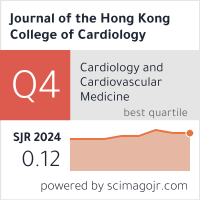Abstract
Introduction: Blood pressure variability, in addition to blood pressure itself, has been used as a predictor for mortality. This study examined the predictive power of baseline/latest/mean/median blood pressure and blood pressure variability measures for all-cause mortality and adverse cardiovascular outcomes.
Methods: The retrospective observational study analyzed patients who presented to family medicine clinics between 1st January, 2000 and 31st December, 2001. Blood pressure measurements were obtained over a five-year period. Standard deviation (SD), root mean square (RMS), coefficient of variation (CV) and a variability score (number of >=5 mmHg blood pressure change) were used as measures of blood pressure variability. The primary outcome was all-cause mortality and the secondary outcomes were heart failure, acute myocardial infarction, and transient ischemic attack (TIA)/stroke, with follow-up until 31 December 2019.
Results:This study included 37540 patients (n=29597 patients with >=3 blood pressure measurements). A nonlinear inverse U-shaped relationship was observed between baseline/latest/maximum/minimum/mean/median/RMS measures of diastolic blood pressure and time-to-death for all-cause mortality (P
Conclusion: Nonlinear inverse U-shaped relationships were observed between blood pressure and its variability measures and all-cause mortality. Higher blood pressure variability was associated with increased risk of all-cause mortality, heart failure, acute myocardial infarction and TIA/stroke.
Recommended Citation
Jiandong Zhou, Sharen Lee, Wing Tak Wong, Keith Sai Kit Leung, Wai Kit Ming, Tong Liu, Kamalan Jeevaratnam, Bernard Man Yung Cheung, Gary Tse, Qingpeng Zhang, Associations between Five-Year Blood Pressure Variability and Risk of Cardiovascular Events and Mortality: A Territory-wide Family Medicine Cohort Study Journal of the Hong Kong College of Cardiology 2025;32(3) https://doi.org/10.55503/2790-6744.1556
Creative Commons License

This work is licensed under a Creative Commons Attribution-Noncommercial-No Derivative Works 4.0 License.



